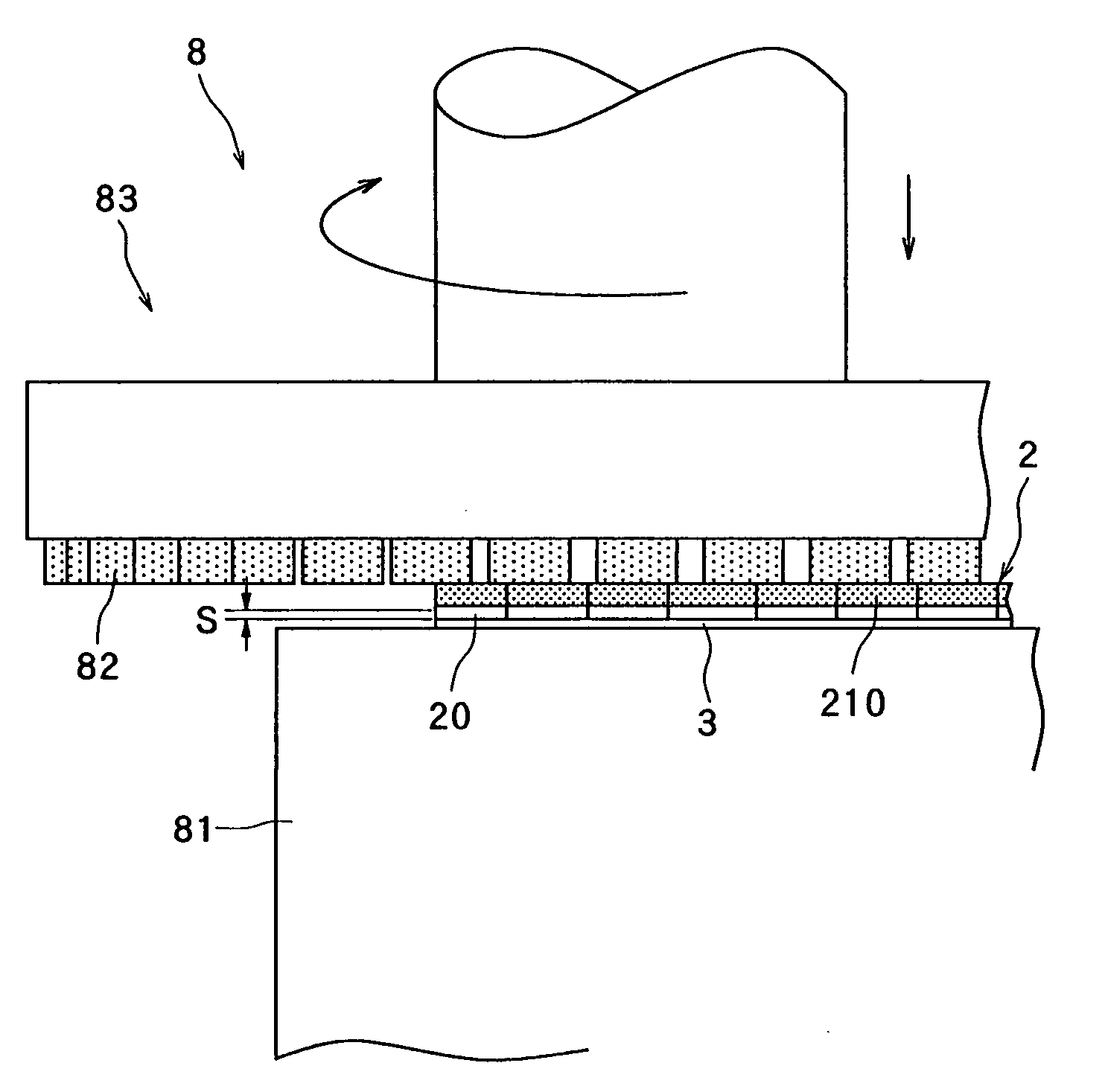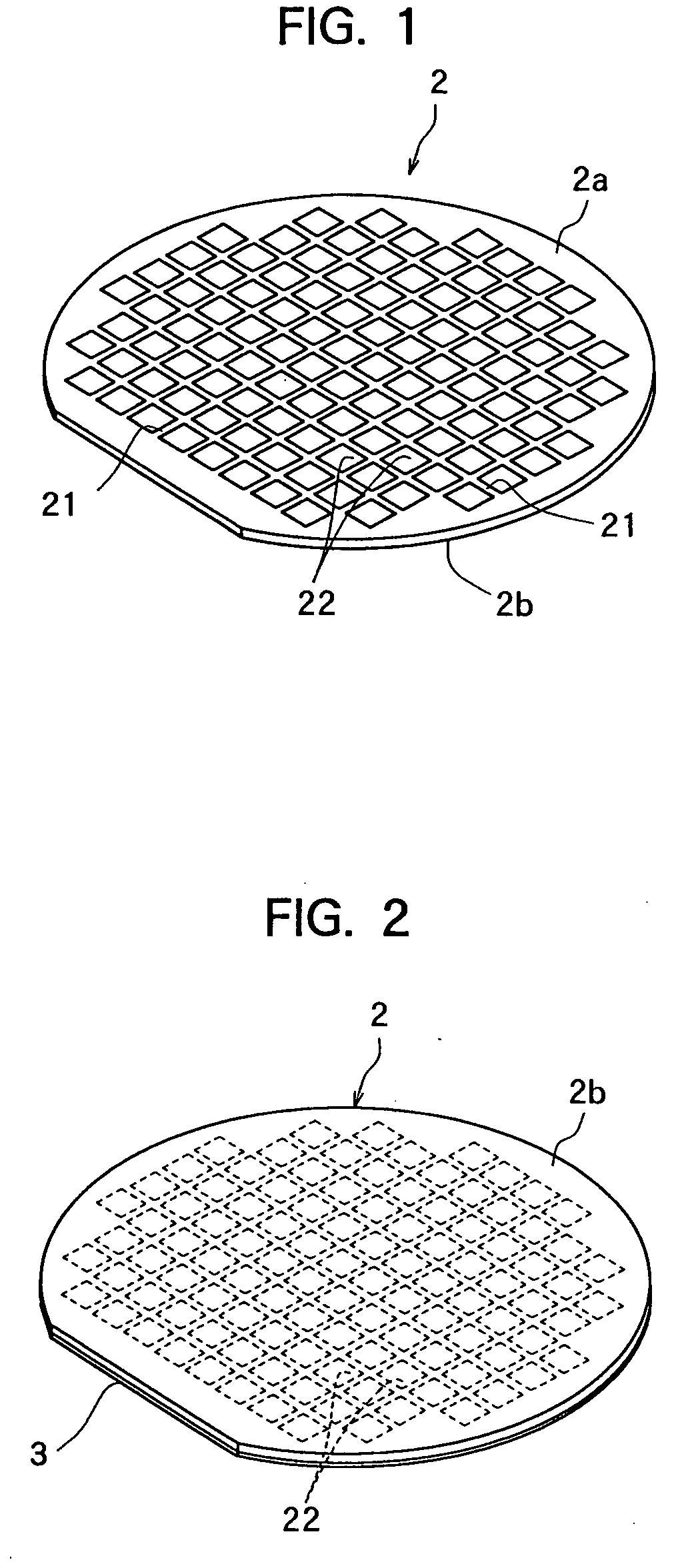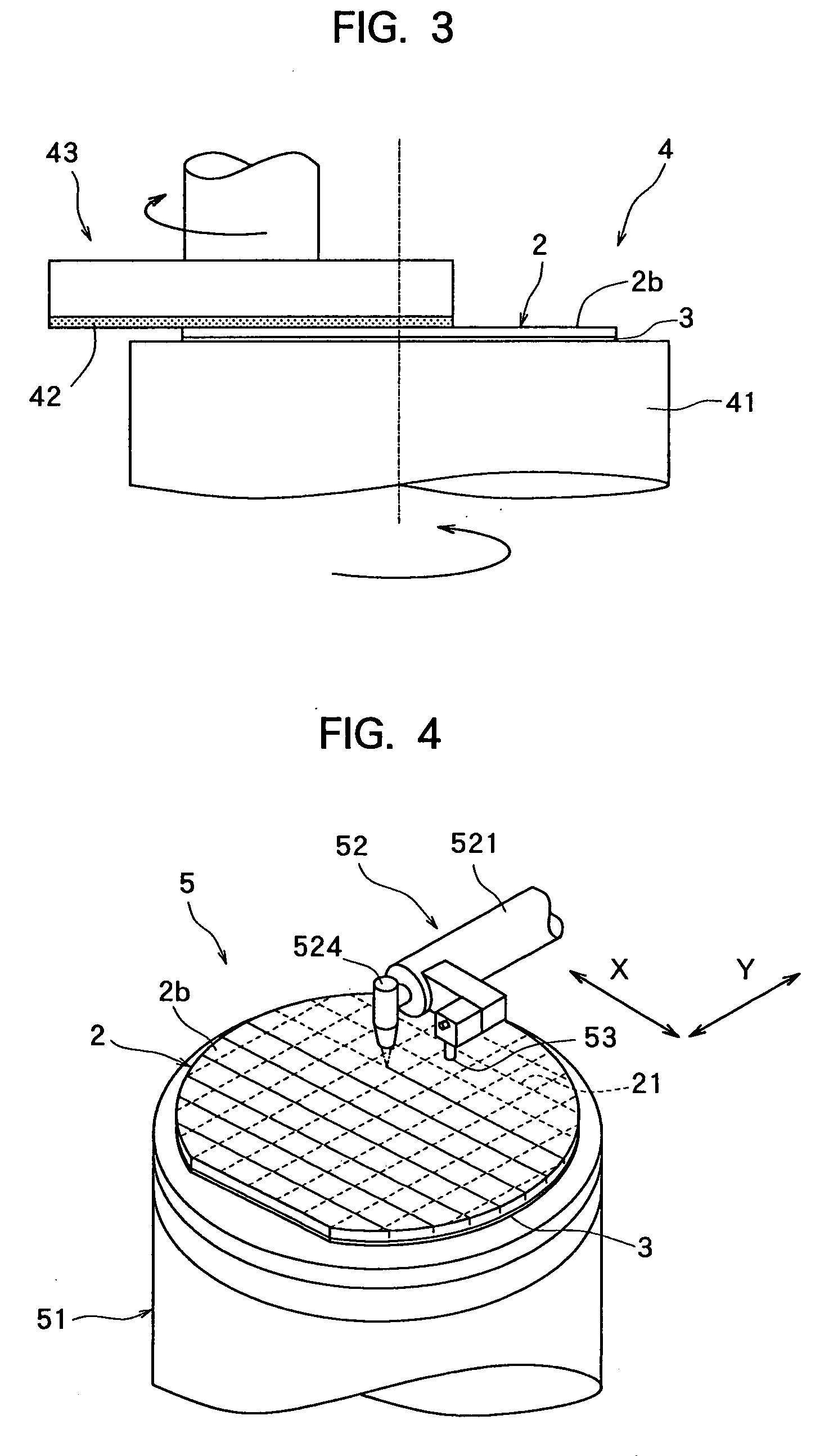Wafer processing method
- Summary
- Abstract
- Description
- Claims
- Application Information
AI Technical Summary
Benefits of technology
Problems solved by technology
Method used
Image
Examples
Embodiment Construction
[0041] Preferred embodiments of the present invention will be described in detail hereinunder with reference to the accompanying drawings.
[0042]FIG. 1 is a perspective view of a semiconductor wafer as a wafer to be processed according to the present invention. The semiconductor wafer 2 shown in FIG. 1 is a silicon wafer with a thickness of, for example, 500 μm, which has a plurality of dividing lines 21 formed in a lattice pattern on the front surface 2a and circuits 22 formed as function elements in a plurality of areas sectioned by the plurality of dividing lines 21. A protective tape 3 is affixed to the front surface 2a of the thus constituted semiconductor wafer 2, as shown in FIG. 2 (protective tape affixing step).
[0043] After the protective tape affixing step is carried out to affix the protective tape 3 to the front surface 2a of the semiconductor wafer 2, next comes a polish-processing step for grinding or polishing the back surface 2b of the semiconductor wafer 2 to form ...
PUM
| Property | Measurement | Unit |
|---|---|---|
| Fraction | aaaaa | aaaaa |
| Thickness | aaaaa | aaaaa |
| Thermal stress | aaaaa | aaaaa |
Abstract
Description
Claims
Application Information
 Login to View More
Login to View More - R&D
- Intellectual Property
- Life Sciences
- Materials
- Tech Scout
- Unparalleled Data Quality
- Higher Quality Content
- 60% Fewer Hallucinations
Browse by: Latest US Patents, China's latest patents, Technical Efficacy Thesaurus, Application Domain, Technology Topic, Popular Technical Reports.
© 2025 PatSnap. All rights reserved.Legal|Privacy policy|Modern Slavery Act Transparency Statement|Sitemap|About US| Contact US: help@patsnap.com



